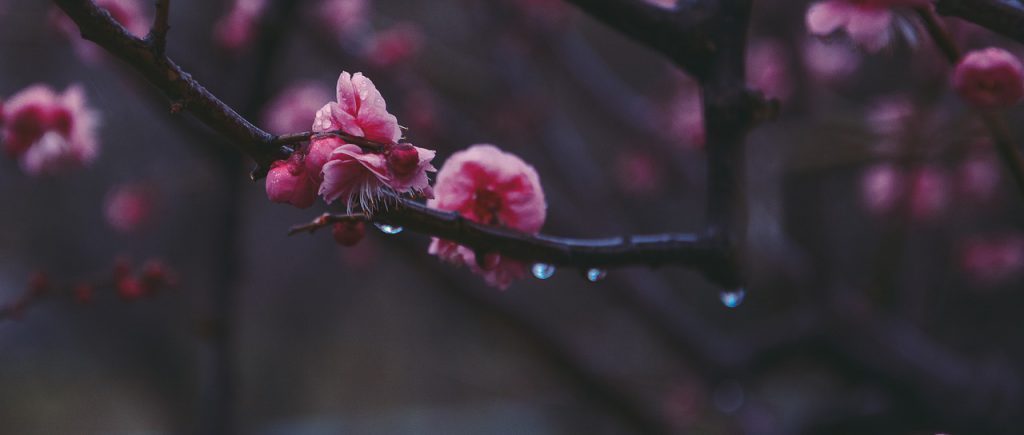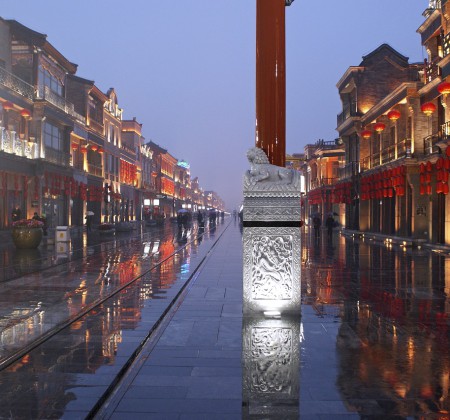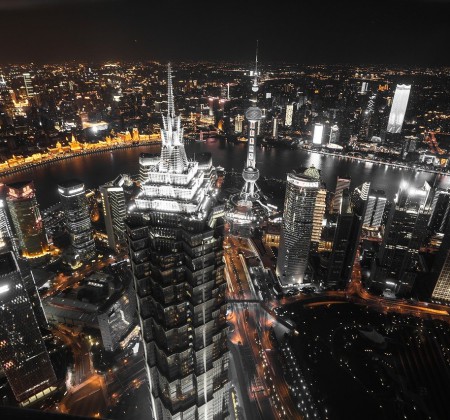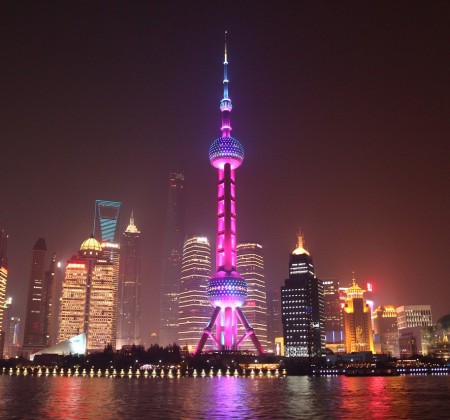Does China Have 4 Seasons?
The division of the four seasons in China began with the Beginning of Spring, the Beginning of Summer, the Beginning of Autumn and the Beginning of Winter in ancient times. Astronomically, the Spring Equinox, the Summer Solstice, the Autumn Equinox and the Winter Solstice are the beginning of the four seasons. Generally, spring is from March to May, summer is from June to August, autumn is from September to November, and winter is from December to February of the following year. In the climate of our country, the average temperature is 22 ℃ as summer, less than 10 ℃ as winter, and between 10 ℃ and 20 ℃ as spring and autumn. The climate varies from place to place, so the length of the four seasons varies.
Spring
From winter to spring, the weather is getting warmer and the temperature rises faster. The average 0 ℃ isotherm in February has been obtained from the Huaihe River.
Push across the Yellow River and reach the southern part of Inner Mongolia in March, except for the northern section of the Daxing’an Mountains, the Altai Mountains, the western Tianshan Mountains and the.
Except for the mountainous areas such as the Qinghai-Tibet Plateau, other areas have risen above 0 ℃. 0 ℃ to 6 ℃ in Northeast China and Junggar Basin.
The temperature ranges from 12 ℃ to 16 ℃ in the Yellow and Huaihe River basins and Tarim Basin, and from 16 ℃ to 26 ℃ in the south of the Yangtze River. There is little precipitation in spring.
With the exception of a fairly wide area of spring rain in the south of the Yangtze River, there is still little rain in other areas.
Summer
The main feature of summer is high temperature and rainy. With the exception of the Qinghai-Tibet Plateau, high temperatures are common throughout the country, with temperatures ranging from 20 ℃ to 28 ℃ in July. To the south of the Huaihe River basin, it is generally between 28 ℃ and 30 ℃. The extreme maximum temperature in Turpan Basin is 48.9 ℃. The Qinghai-Tibet Plateau is below 10 ℃. The summer monsoon comes from the tropical ocean and is the season with the heaviest rainfall in most parts of the country. In the areas south of the Yangtze River to the north of Nanling and in the mountains of northwestern Xinjiang, they account for less than 40% of the annual precipitation, more than 60% in North and Northeast China, and more than 70% in most of the Qinghai-Tibet Plateau. To the east of Yichang and between 26 ℃ and 34 ℃ north latitude is the Meiyu area.
Generally, the Meiyu period is from mid-June to early July, which lasts for nearly a month. During this period, it was overcast and rainy, often sandwiched with torrential rain and thunderstorms, with a total precipitation of up to 300 mm. Typhoons have a great impact on the southeast and southern coastal areas of China. The average number of typhoons landing in China is 9.2 per year, mostly from July to September. The provinces with the largest number of landings are Guangdong, Taiwan, and Fujian, accounting for 88% of the total number of typhoon landings in China, of which Guangdong Province is the most, accounting for about 40% of the total number of typhoon landings in the country.
Autumn
Autumn is the weather of “autumn high and cool” with light sky and sunny weather. The air temperature changes in the opposite direction from warm to cold in spring, and the isotherm distribution in October is basically similar to that in April. The monthly average temperature in Daxing’an Mountains, Tianshan and Qinghai-Tibet Plateau is below 0 ℃. The monthly average temperature in North China is between 6 ℃ and 16 ℃. The areas to the south of Huaihe River and Qinling Mountains and to the north of Nanling Mountains are between 16 ℃ and 22 ℃. South China is between 22 ℃ and 24 ℃. The precipitation is relatively small, except that the southeast coast, the eastern side of the Qinghai-Tibet Plateau, the south of the Qinling Mountains and Sichuan and Guizhou account for more than 30% of the annual precipitation, most of the rest of the country is between 15% and 20%.
Winter
Winter is the coldest season of the year, and January is the coldest month in winter. There are more than 2/3 of the land in the country, and the average temperature is below 0 ℃. The 0 ℃ isotherm in the January isotherm extends westward through the Huaihe River and Qinling Mountains to the southeastern edge of the Qinghai-Tibet Plateau, and then through the Hengduan Mountains to Nyingzhi and Delongzong in Tibet. To the north of this line, the rivers are generally frozen. In the northeast, northwest and most of the Qinghai-Tibet Plateau, the average temperature in January is below-10 ℃, in which the Daxing’an Mountains, Xiaoxing’an Mountains, Altai Mountains and the Northern Tibet Plateau are still below-20 ℃, and to the north of the Daxing’an Mountains, the temperature is below-30 ℃. The extreme minimum temperature in Mohe Town, the “Arctic Village” in China, reaches-52.3 ℃. In the area south of the 0 ℃ isotherm, there is no freezing period in the rivers, only snow. The south of Nanling is above 10 ℃. Taiwan, the southern tip of Hainan Island and the South China Sea islands are all above 20 ℃. In a word, the law of winter temperature distribution in China is from south to north, which decreases gradually with the increase of latitude, and the temperature difference between north and south is more than 50 ℃. With an average increase of one latitude to the north, the temperature decreases by 1.5 ℃.
The Mongolian high pressure is formed in winter, and at the same time, there is a low pressure on the ocean, which causes the cold air to flow eastward to the sea. therefore, our country is often attacked by the cold wave at the turn of autumn and winter, winter and spring. The cold wave enters China roughly in three ways: the West Road, advancing eastward from Xinjiang, passing through the Hexi Corridor, and going south along the eastern side of the Qinghai-Tibet Plateau, causing obvious cooling and a wide range of overcast and rainy weather in the vast areas of the southwest and the south of the Yangtze River. the middle road enters China through the people’s Republic of Mongolia, through Hetao and North China to the middle and lower reaches of the Yangtze River, and sometimes across Nanling to the Pearl River Basin, and to the north of the Yangtze River is windy and cool weather. There is rain and snow to the south of the Yangtze River. The East Road, whose source is in the northeast of Siberia or the Sea of Okhotsk, sometimes goes southward through the northeast, crossing the Bohai Sea and the North China Plain directly to the two lake basins, and sometimes southward through the Sea of Japan, the Korean Peninsula and the Yellow Sea, affecting the coastal areas of southeastern China and causing cloudy, rainy, windy and snowy weather for a long time. There is not much precipitation in winter, there is generally drought and little rain in China, and only the middle and lower reaches of the Yangtze River and the south of the Yangtze River form a relatively stable precipitation belt.
Is There Any Place in China That Is Not Cold All the Year Round?
1. Hainan Province
Hainan Island is located on the northern edge of the tropics and has a tropical monsoon climate. It has always been known as a “natural greenhouse”. It has a long summer and no winter, with an annual average temperature of 22-27 ℃, and a cumulative temperature greater than or equal to 10 ℃ is 8200 ℃. The coldest January temperature is still 17024 ℃.
The annual light is 1750-2650 hours, the light rate is 50%-60%, the light and temperature are sufficient, and the photosynthetic potential is high. Hainan Island has the advantages of early spring, rapid heating up, large daily temperature difference, frost-free throughout the year, warm winter, three-cropping rice and four seasons of vegetables, so it is an ideal base for breeding in southern China.
2. Xishuangbanna
Xishuangbanna has plenty of rainfall and sunshine, with an annual rainfall of 1136 Mel 1513 mm. During the wet season, there are more clouds and rain, less wind speed, less sunshine, high temperature and high humidity. During the dry season, there are few clouds and rain, strong light and heavy fog. The annual average temperature in Xishuangbanna is between 18.9 ℃ and 22.6 ℃.
3. Hong Kong
Hong Kong has a marine subtropical monsoon climate with four distinct seasons, with an annual average temperature of 23.3 ℃. The temperature may fall below 10 ℃ in winter and rise above 31 ℃ in summer. Rainfall is concentrated from May to September, accounting for about 80% of the annual rainfall. There is abundant rainfall throughout the year, the fragrance of flowers in the four seasons, foggy temperature in spring, hot and rainy in summer, sunny in autumn and slightly dry and cold in winter.
4. Sanya
Sanya is located at low latitudes and belongs to the tropical marine monsoon climate zone, with an annual average temperature of 25.7 °C, the highest monthly temperature in June with an average of 28.7 °C, and the lowest monthly temperature in January with an average of 21.4 °C. Sunshine lasts 2534 hours all year round. The average annual precipitation is 1347.5 mm.
5. Kunming
The annual temperature difference in Kunming is small, the annual average temperature in the urban area is about 15 ℃, the monthly average temperature in the hottest time is about 19 ℃, and the monthly average temperature in the coldest time is about 8 ℃. Due to the suitable temperature and humidity, long sunshine and short frost period, the flowers are not shedding all the year round, and the vegetation is evergreen all the year round, which leads to the reputation of Kunming as the “spring city”.











